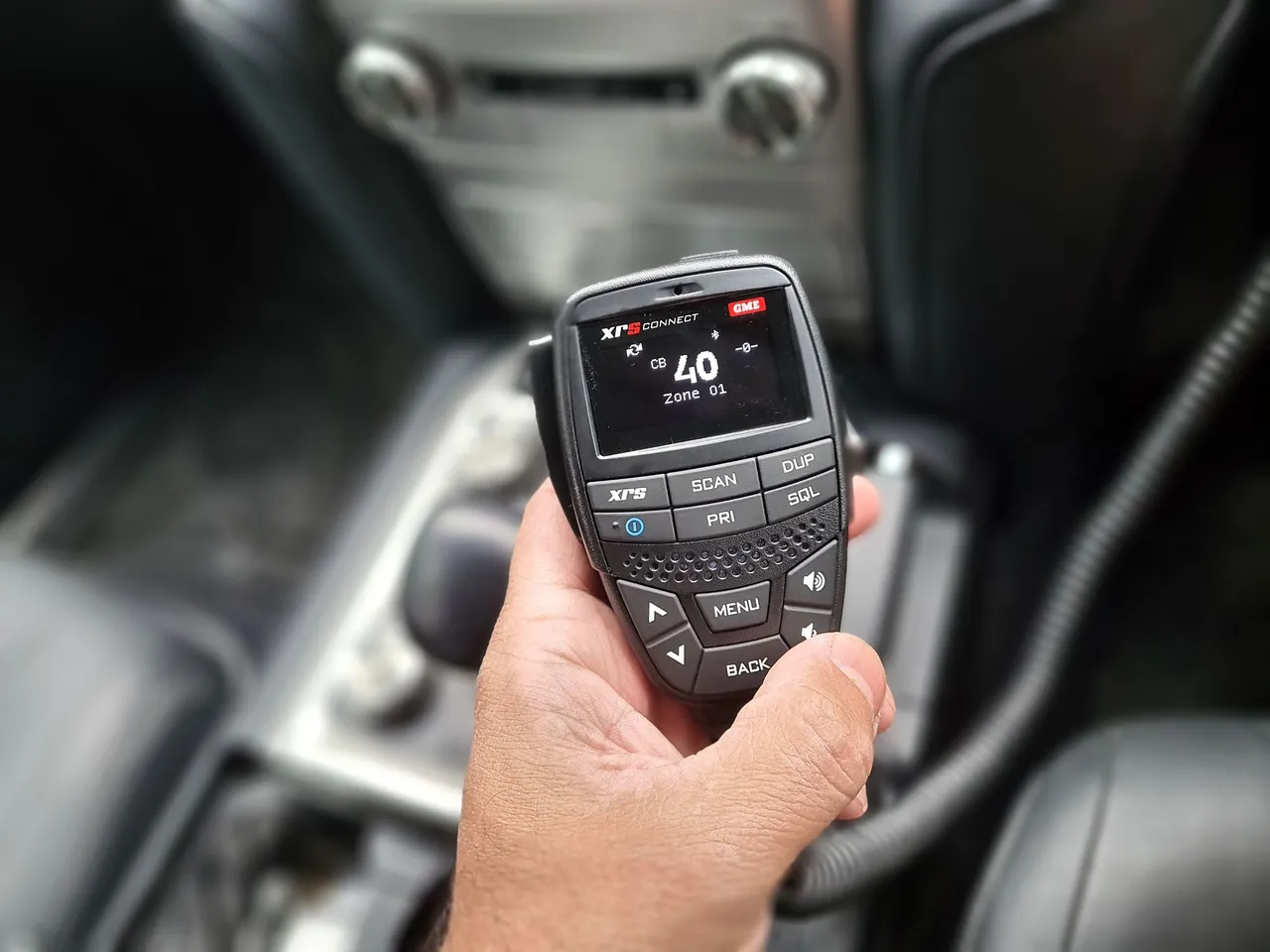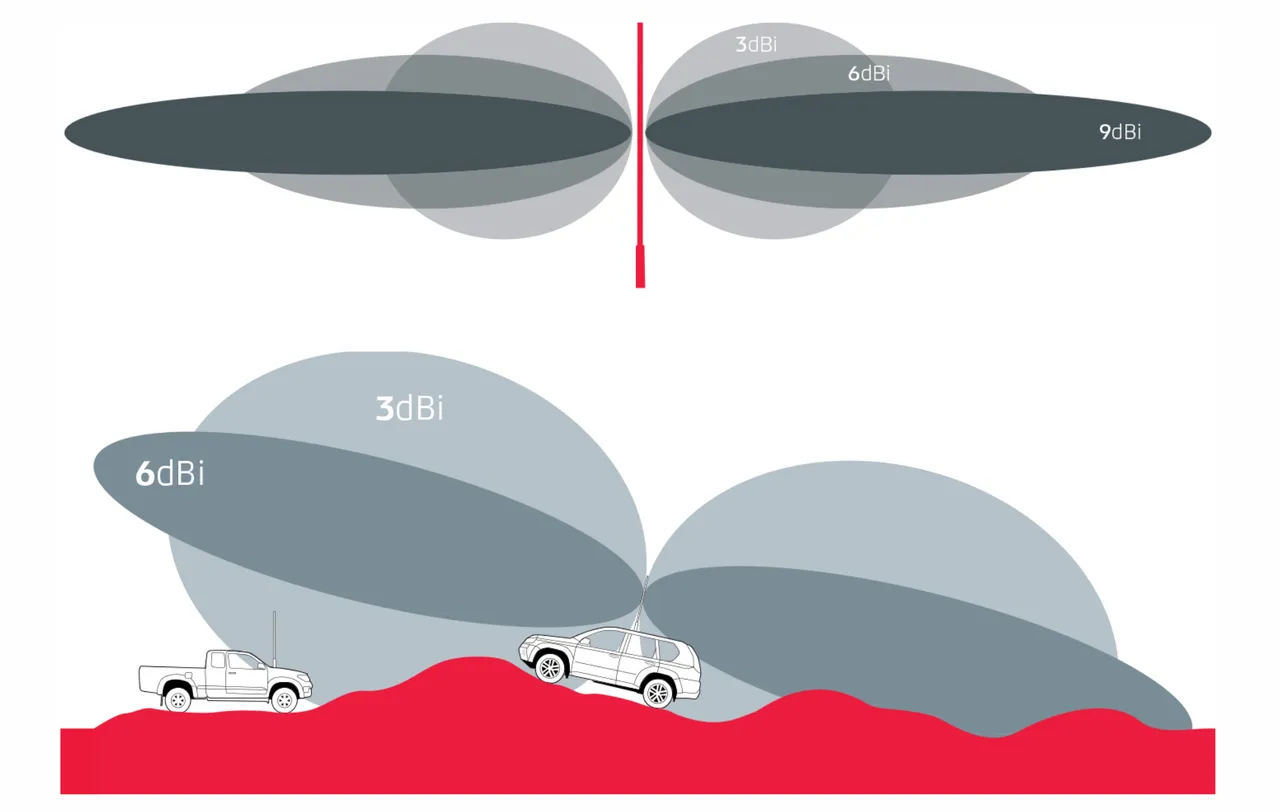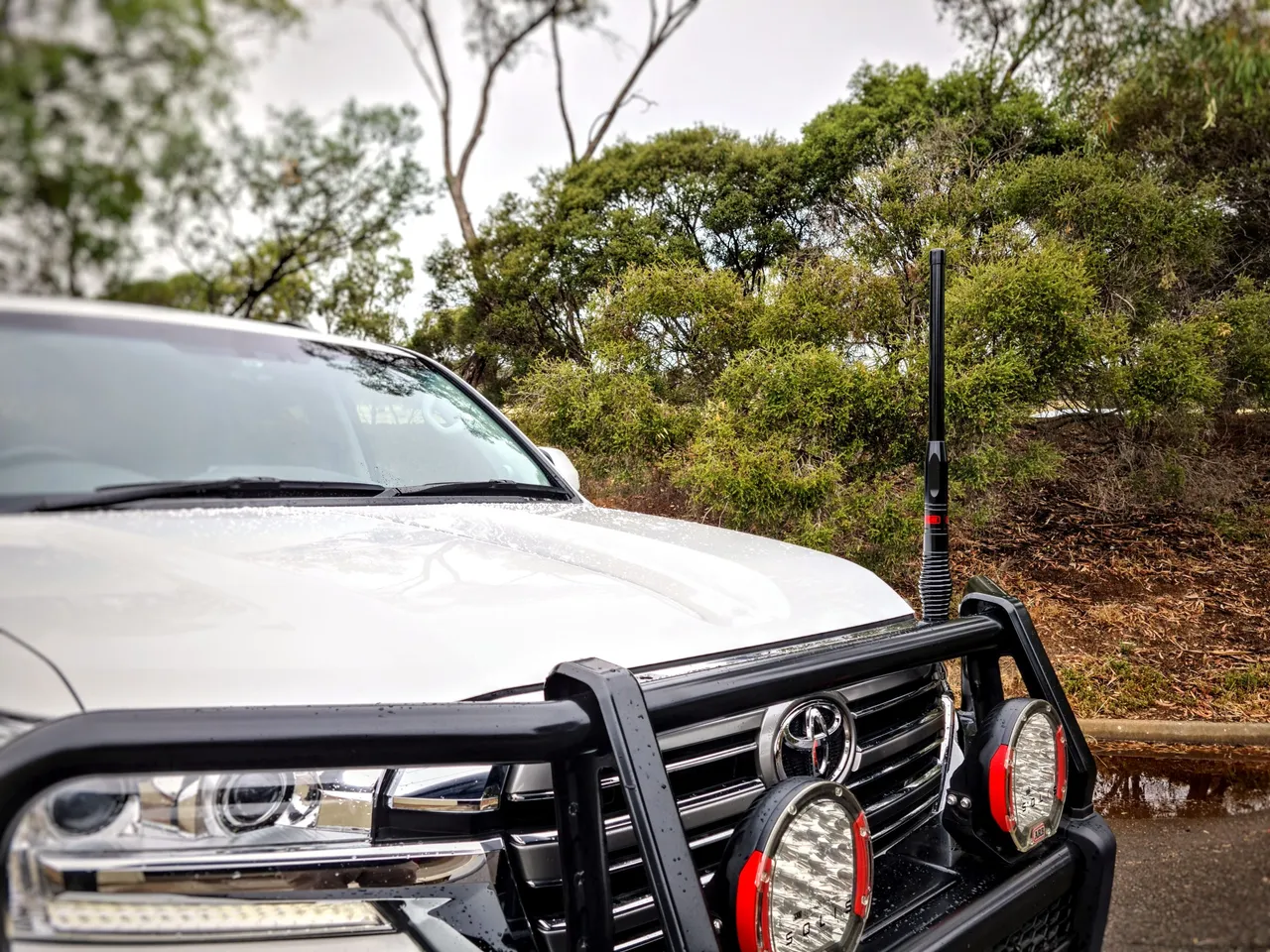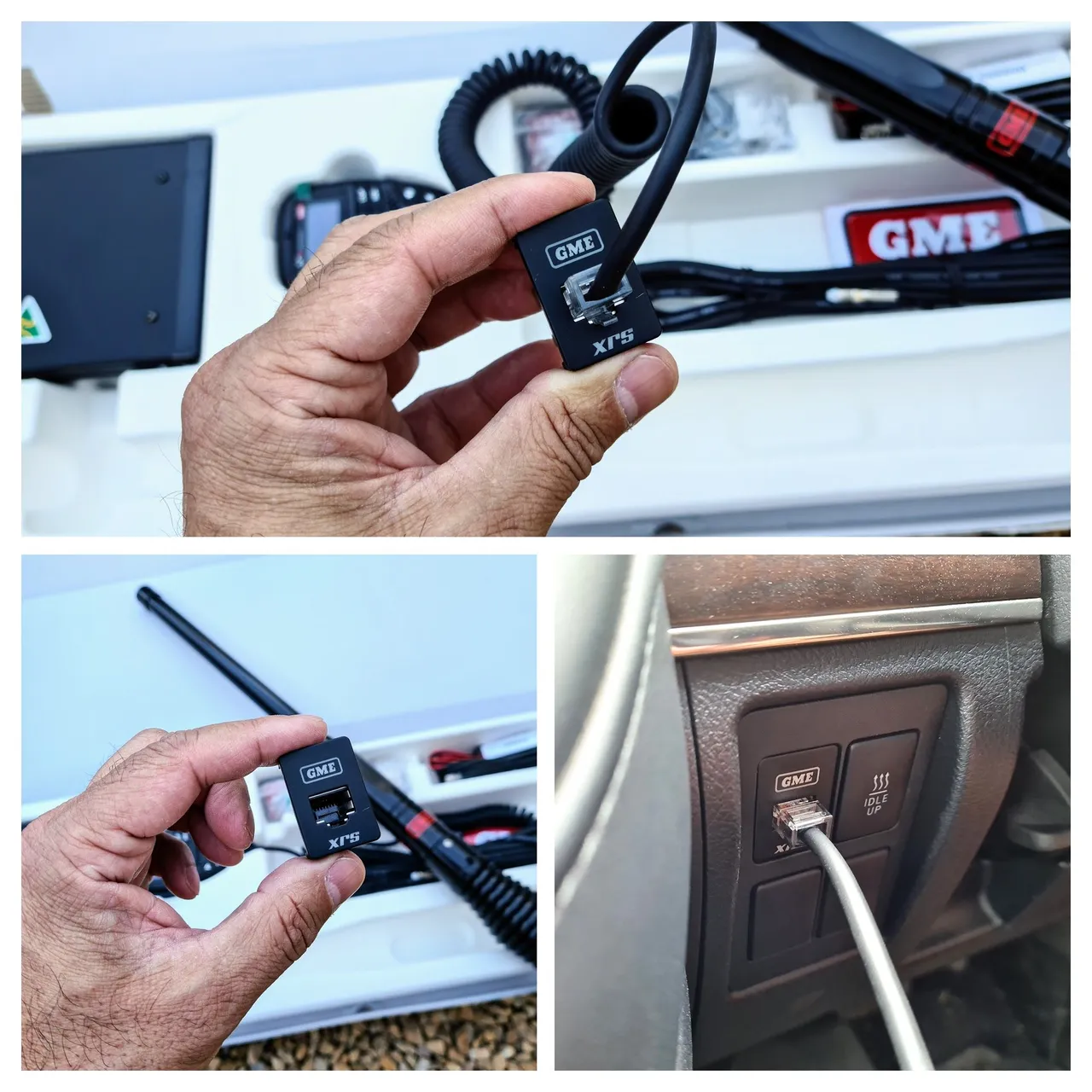
I often find myself in remote areas and in Australia that means there's little, and usually, no mobile phone coverage. I'm talking about places that are many hundreds of kilometres from anywhere. It's a harsh, hostile and unforgiving environment meaning effective communication is critical.
I don't want to go into too much detail in this post as there are many different forms of communication and it can get complicated. Initially I wish to say that in the outback or remote areas one is, these days, best served by a satellite phone for emergency purposes plus a personal locator beacon (PLB) such as the GME MT610G which pinpoints your location by GPS and transmits it to the authorities in the case of extreme, life-threatening, emergency. Sat-phones are designed for long range communications and can reach any phone on the planet via satellite. - but are costly to buy and run. But that's a whole different post.
One also needs the ability to communicate at shorter range, vehicle to vehicle and person to person and, here in Australia, UHF CB radios are used for that purpose. UHF stands for ultra high frequency and CB stands for citizen band. It uses 476.4250–477.4125MHz radio frequency and comprises 80 channels.
I have just had a GME XRS-connect UHF radio fitted to the Big Dog, my Land Cruiser four wheel drive, and I thought I'd do a little post about it.


The fully Australian made XRS-connect 4wd pack I bought which comes complete with the 2.2dBi Gain antenna.
I opted for this kit as it was a little cheaper than buying the items individually and it came with the antenna I was looking for. I'll buy the longer 6.6dBi gain antenna in the future, but for now this one is what I wanted.
Gain is the term used to measure the antenna's ability to concentrate the radio frequency in a particular pattern and dBi is the unit of measurement. The greater the number the flatter and further the signal will transmit. The lower the number the more bubble-like the signal is, but it won't reach as far.
I will swap out the 2.2dBi when required and use the 6.6dBi however for my needs now the 2.2dBi will be perfect. I will only be communicating at ranges of a few kilometres, vehicle to vehicle and person to person, in hilly and mountainous terrain where the lower gain works best.

Here's a good representation of 'gain' and the differences of high and low. You'll see the higher transmits a flatter signal that reaches further. src
The limitation (for my needs now) with the high-gain antennas is that the signal is so flat and focused that it won't drop into valleys and dips preferring to shoot straight over peaks, or obstacles in an urban environment. Imagine buildings...The lower gain antenna will more easily penetrate around them and into windows and doorways whereas the high-gain antenna is more focused for longer range.
The lower gain antenna's create (essentially) a bubble of signal which is easier to pick up in mountainous or hilly terrain and urban environments. If in open, flat country the high-gain antenna's excel as they will reach greater distances, especially with the use of repeater stations.

XRS-Connect
The XRS radio by GME is unique in that it was the first to incorporate a phone app that controls various settings and upgrades, broadcasts location and can also be set with preferred frequencies from State to State - As one moves through a location it automatically picks up and scans the desired frequencies. The App also can record incoming transmissions and permits offline map caching allowing me to download and store topographic maps for accurate map-displays in areas mobile phone service isn't available. It does a raft of other things but I'm mindful of boring you.
The radio unit itself is under-dash mounted so is not visually seen. I decided to opt for an RJ45 connector for the handset cable, rather than hard-wire it, which I had to buy separately. It is wired into a blank just behind and to the left of the steering wheel. When the radio is required, say on a trip, I simply take the handset from the centre console storage, plug it in and it's ready to go.
The controls, microphone and speaker, are all on the handset itself. The App doesn't operate the radio just provides connectivity to adjust settings and so on. The RJ45 connecter is backlit so at night I can see where the plug is. The boffins at GME think of everything.

What's it used for
The obvious answer is, to talk to other people. But UHF radios are more than just a means to tell your buddy in the car behind that he is a wanker. (But that happens too of course.)
The ability to communicate when travelling in convoy can be critical to safety as one can radio back with road conditions, directions or even the situation with on-coming traffic. We see a lot of road trains here in Australia, prime movers that transport two to five massive trailers, and with some of the roads being less than acceptable in outback areas it's good to know they are inbound as they are big and fast...and dangerous. There's also many wide load haulers moving mining equipment about and the same goes there.
Vehicle to vehicle comms can also alert the vehicles ahead of problems such as deflating tyres, lose loads or some such thing. I have had cases where the tail-gunner has had problems and dropped far behind...It can be a dangerous situation and the ability to communicate can make the difference between inconvenience and serious trouble.
Of course, general chatting happens also however I like to keep that to a minimum as anyone within earshot can hear the comms usually and I don't like to clog up the channels.
Just a word on channels...We have 80 with a few set aside for specific uses rather than general use. Here's a few examples:
- Channel 18 is typically used by off-roaders, caravaners and general travelers.
- Channel 10 is primarily for 4wd club convoys.
- Channel 40 is used mostly by heavy vehicles, road trains and the like.
- Channels 5 and 35 are restricted for emergency services
- Channel 11 is for initiating conversations but not having them (another channel is called out and one changes).
- Channels 22 and 23 are for telemetry, telecommand and automated data comms (turning pumps on and off for instance).
- Channels 61, 62 and 63 are reserved for future use so no comms are permitted.
Keep in mind that the signal will only reach so far so unless one is in the general range-proximity of someone talking one will not hear them - it's not like everyone is talking all at the same time...They are separated by distance.
What else is it used for
When off roading one is presented with many different terrains and conditions. Some is simple and some is very technical. A lot of the technical stuff can be dangerous and one runs the risk of vehicle damage, personal injury and even death. Often in these cases the vehicle is travelling extremely slowly and precise wheel-placement is critical. That's where the UHF radio comes in handy.
Further to a vehicle-mount radio, most four wheel drivers will have one or two hand held units. Mine are also by GME. These are used by the spotter to radio back directions to the driver for exact wheel-placement in difficult or technical situations. During vehicle recovery like winching they are also critical...Shouting instructions over the roar of a V8 engine in low range low gear with a winch grinding at the same time makes for poor communication.
I'm purposely only talking about civilian communications in this post although the same principles as above, plus more, apply in military situations...only, the technology is different and different types of radio-systems are used. Systems like HF (high frequency) which uses the 3 to 30 MHz radio spectrum and VHF (very high frequency) which uses 30 to 300 MHz plus the more advanced RFoF (RF over Fibre technology) are commonly used. Here's not the place to talk about military stuff though and there's many other uses for UHF CB so let's push on.
When I hike, alone or with others, in remote areas I usually have a hand-held unit, as do the others. Getting lost happens and comms can help locate people, or just help people feel more connected whilst a search ensues. I use them when kayaking, hunting, at shooting events and in fact just about anywhere communication and connection might be required. I like to be prepared.
I'm pleased to have my radio mounted - I've held off because I've not really been going too many places where I'll need it due to the health situation that has taken the world by storm. But now I've got it I feel a little safer knowing I can communicate when needed, tell my mate behind me he is a wanker for instance.
That's about it. I've endeavoured not to get too complicated in this post but impart a little understanding at the same time. I hope I succeeded.
Design and create your ideal life, don't live it by default - Tomorrow isn't promised so be humble and kind